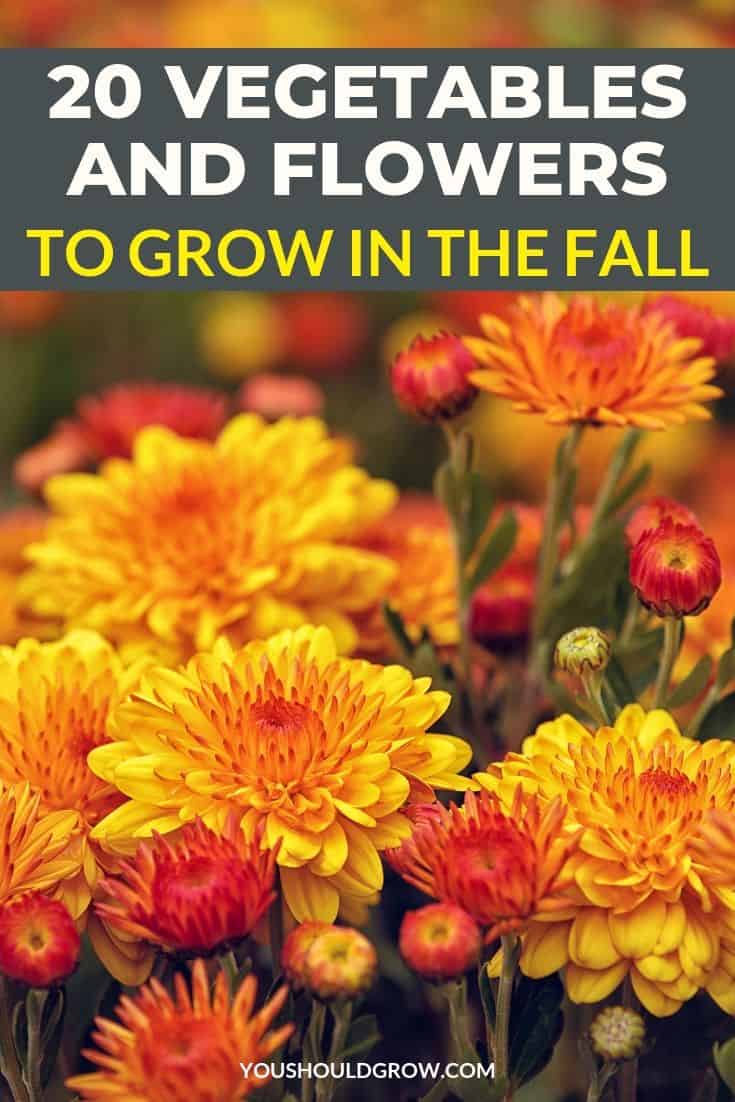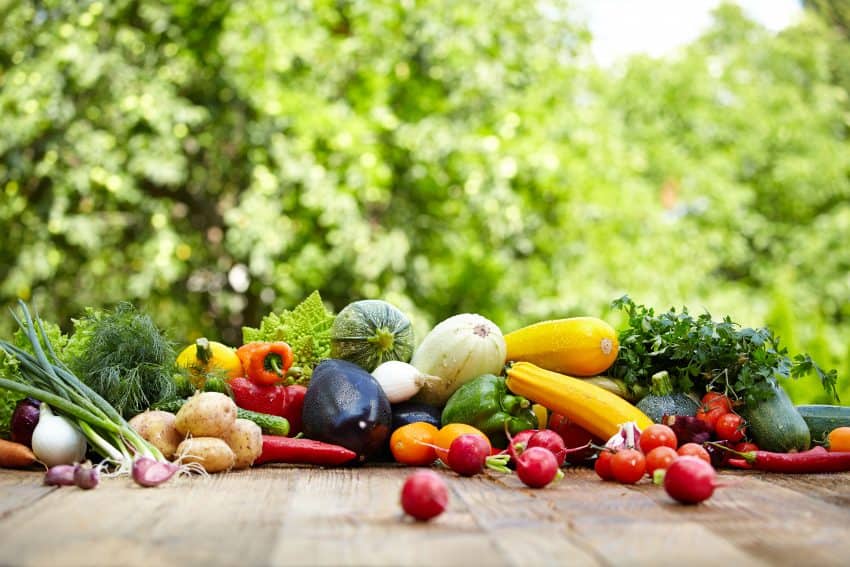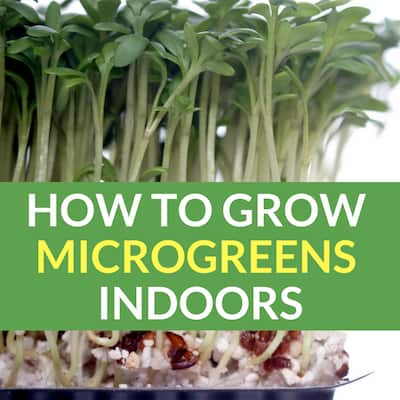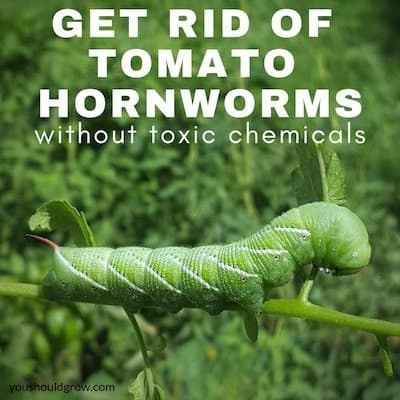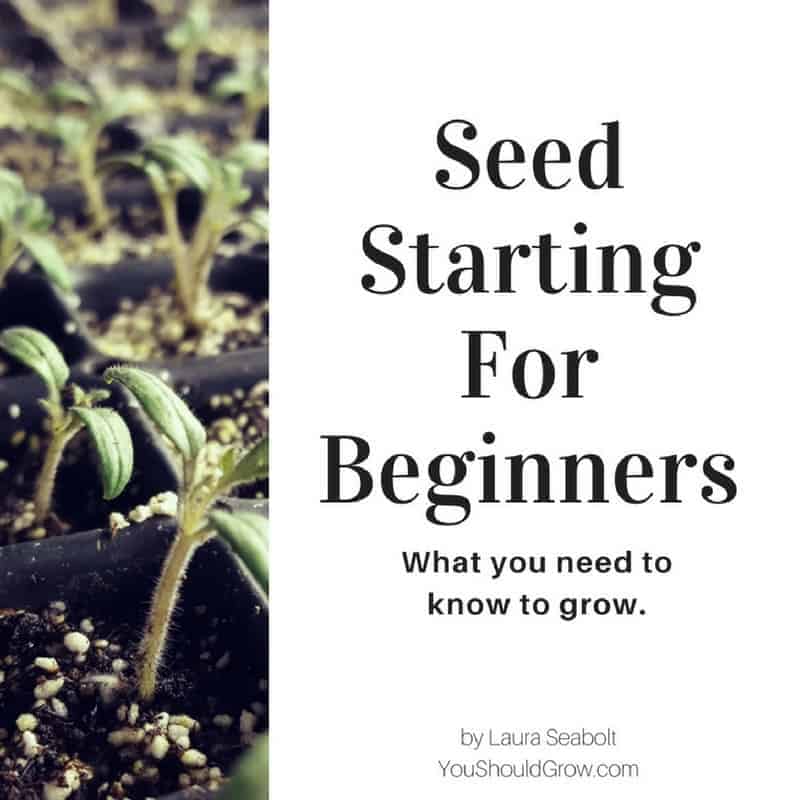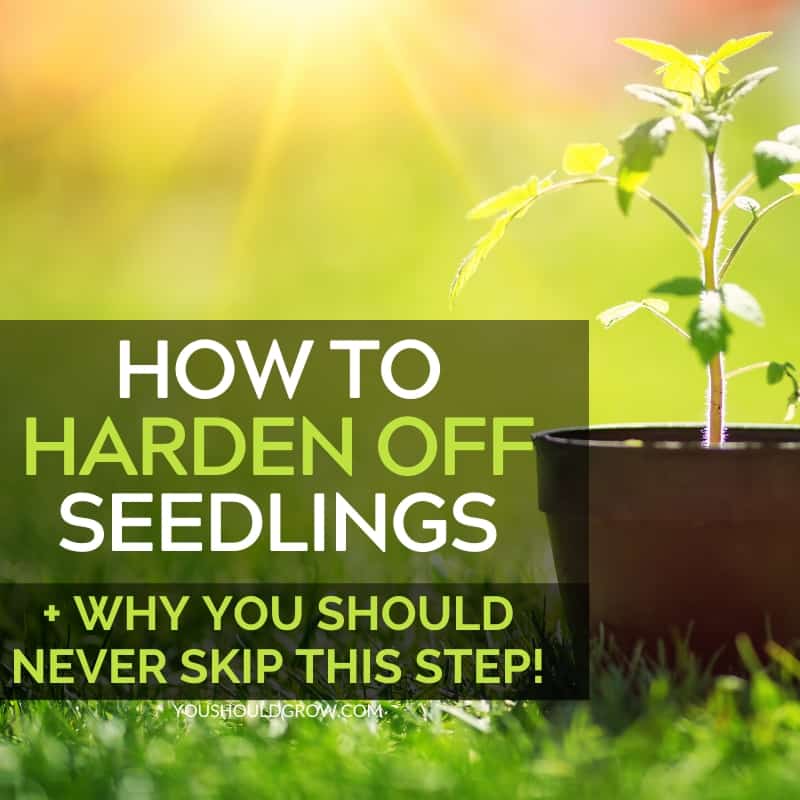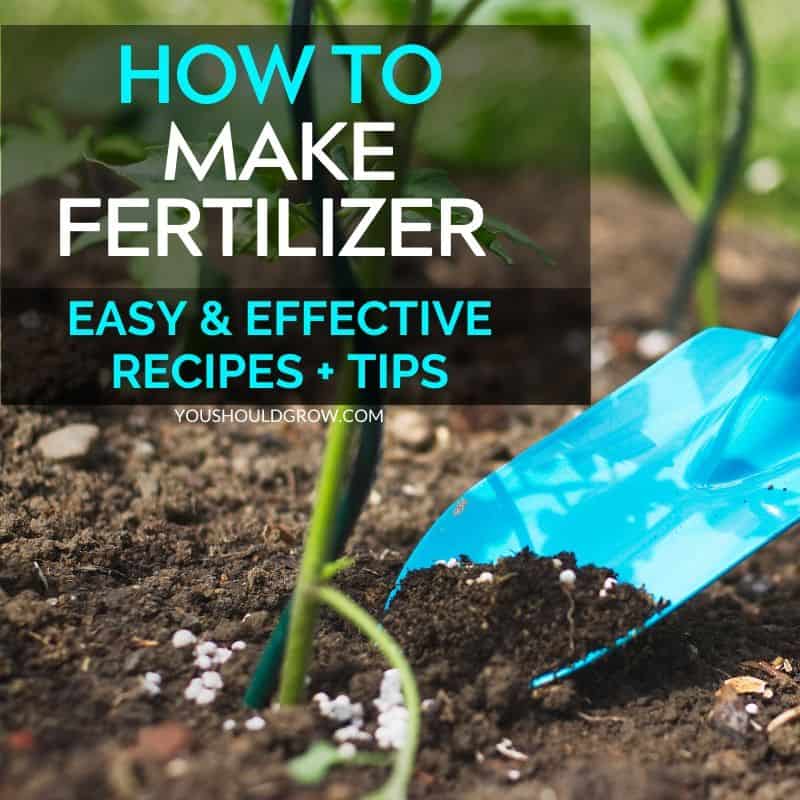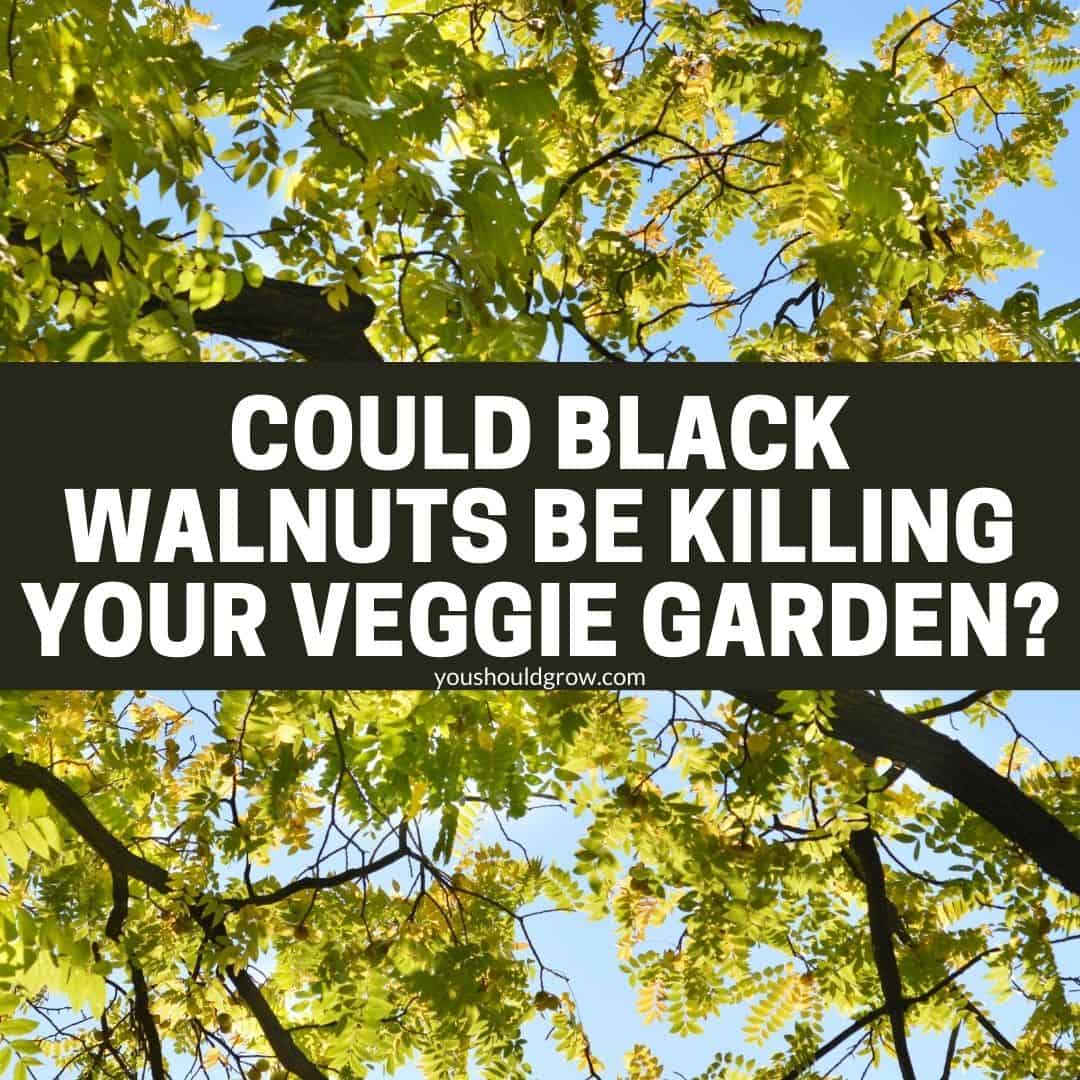Fall Garden Plants – Vegetables & Flowers
As an Amazon Associate and member of other affiliate programs, I earn from qualifying purchases.
Fall garden plants are the perfect way to enjoy the season while you also make sure you have a stunning spring garden on the way. Whether you are planting a fall vegetable garden or prefer fall garden flowers (or both!), there are many options to choose from.
Planting in the fall means you don’t have to deal with bugs, scorching hot weather, or deal with as much weeding. You will find that fall garden plants can give incredible results with better tasting veggies and more beautiful blooms.
In short – once the weather cools off don’t put away those gardening tools yet, because you have some work to do to get those fall garden plants rooted.
Fall Vegetable Garden Plants
If you have your heart set on a fall vegetable garden, you’re in luck! Fall harvests are one of my favorites – there are so many amazing veggies that will thrive. Here are four of my favorite options for edible fall garden plants.
Green Beans
If you have 10-12 weeks before your first frost, you can plant a second crop of green beans!
The flavor of fall-planted green beans is out of this world. To prepare the soil for beans, you should always make sure there is a proper amount of compost—at least 1/2 inch. Don’t plant the beans any closer than 3 – 6 inches apart. The beans should be planted in rows at least 2 feet apart.
Depending on which growing zone you live in, you may need to also add a layer of straw, bark, or mulch to protect it. Anything higher than growing region 8 needs that protection from the sun and heat.
Growing beans is reasonable easy no matter the season, but you will especially enjoy getting to munch on fresh green beans in the fall—just imagine the green bean casserole you can serve at Thanksgiving!
You’ll need to plan for several green bean plants to feed your family. We like to use this tool for planning how much to plant.
Broccoli
Broccoli planted in the fall has a sweet flavor. It also tends to grow better in the fall than in the spring, mainly due to the volatility of the spring season.
The biggest challenge is figuring out when the best timing to start these in your fall vegetable garden for your area is. First, you need to figure out when the average frost happens in your area. Then plant the broccoli 85-100 days before then.
You should plant the broccoli in moist, well-drained soil. Standing water will drown it out, which is definitely not good for the plant. It’s crucial to include compost or manure in the soil and work it in well. You should do this before planting to ensure the ground is in the best condition for the broccoli.
Turnips
You will be thanking yourself after you taste your fall-grown turnips! They are a wonderful fall garden plant that you can keep growing until after the first hard freeze. You can begin planting the fall turnips in August all the way up to October, depending on your growing area.
Not only can you enjoy the root vegetable, but turnip leaves are quite tasty as well. Once you pick some turnip leaves, new ones will grow in its place.
To make the turnip greens thrive, it’s important to make sure you water them frequently, and you plant them 6 inches apart. You want to give them ample space to grow, so they aren’t competing with each other. They taste their very best once the nighttime temperatures are 40 degrees F. or below.
Garlic
One wonderful thing about garlic is that it really flourishes in the fall and winter. During the cooler months, the roots of the garlic really develop. You should plant garlic in a sunny area with fertile soil. Garlic also does good in raised garden beds too.
The garlic should be planted about 2 inches deep and no closer than 2-4 inches apart. Once it’s time to pick the garlic, you are going to be so glad you grew it yourself. It’s one of the easiest fall garden plants there is and by far one of the most useful.
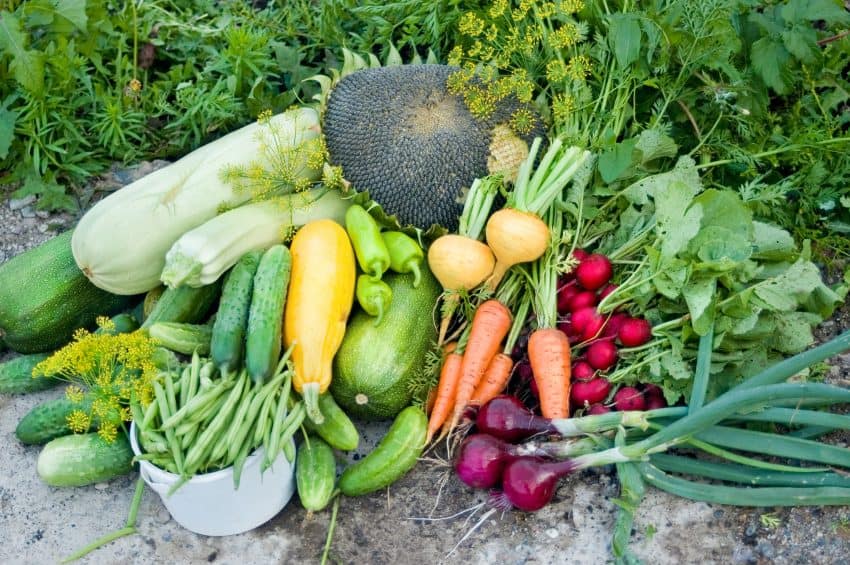
Other Fall Vegetable Garden Items to Consider
- Brussels sprouts
- Scallions
- Cabbage
- Arugula
- Romaine
Fall Garden Flowers
If you long for spring gardens full of pretty flowers, don’t dismay! Fall garden flowers are easy to grow, colorful and just as lovely as their warm-weather counterparts. Here are a few blooms to try this fall.
Pansy
I love growing pansies because they’re so low maintenance, readily available at nurseries, and tend to be fairly cheap plants to buy. They also come in a lot of colors and are perfect for cheering up a dreary winter garden.
Pansies will tolerate freezing temperatures, bouncing back after a frost to make more blooms. You can plant them in full to part sun in the fall as soon as temps start to take a downward turn and let them bloom all winter and into early spring.
Keep them healthy with regular watering so they don’t dry out. Letting them dry out is one of the most common reasons gardeners struggle to grow pansies. Also, use a flowering and fruiting fertilizer to keep them healthy and those adorable flowers coming.
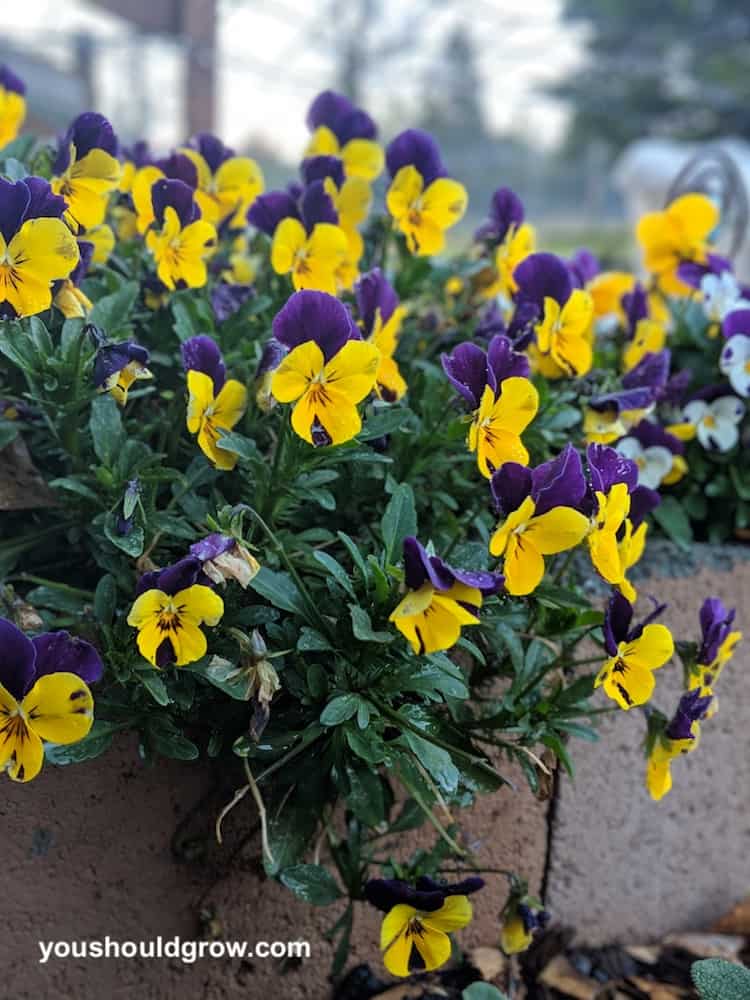
Aster
If you’re looking for native fall flowering plants, asters should top your list. These easy to grow perennials will bloom from spring through fall and come in a variety of colors and sizes.
They’re great for attracting pollinators and can be planted in borders, rock gardens, and more. Asters need full to part sun, although in areas where summers get hot, choose a spot that gets some afternoon shade from the hot hot sun.
Some of the taller aster varieties need to be staked as the blooms get tall, but generally, asters are super low maintenance. Amending your soil with a bit of compost, keeping them watered, and a bit of fertilizer as needed is all you need to keep these cheery fall blooms happy.
Mums
Although mums can be considered a perennial plant, mums planted in the fall behave more like annuals except in areas with the mildest winters. But you just can’t help but notice their cheery fall colors when nurseries start displaying mums in autumn.
Mums like full sun and require frequent watering, but given appropriate care, mums will continue to bloom as long into the cooler fall months.
Another option to consider is planting spring-blooming bulbs. I love landscaping with bulbs because they are just so incredibly simple to grow. They’re quite hardy and tolerant, and these are the easiest flowering bulbs to plant in the fall.
Daffodil Bulbs
These beauties can easily be planted during the fall months, and you will end up with gorgeous flowers in the early spring. Daffodils are both hardy and easy to grow, making them the perfect choice for fall garden plants.
The first thing you need to do is figure out when the first frost usually is for where you live. Then plant bulbs in the ground 2-4 weeks before then.
Daffodils grow their best in full sun, but can also thrive in partial shade as well. They should always be planted in a well-drained area, so they don’t rot.
If you live where there are harsh winters, then make sure to plant the bulbs at least 3 inches in the ground. On average, try to space the bulbs anywhere from 3-6 inches apart.
Tulip Bulbs
Growing tulips is rewarding because the result is stunning flowers that show up in late winter or super early in the spring. In fact, the first glimpse of a tulip is a sure sign that spring is on its way.
You should plant your tulips in the fall, so they are ready to bloom in the spring. Always try to plant the tulip bulbs so that they will be in direct sunlight. A little bit of shade is okay, but you should never pick a dark area of your yard.
For prime results, you will want the temperature to be under 60 degrees outside before planting. Aim to plant them anywhere from 6-8 weeks before a hard freeze. To prepare the soil, you will want to loosen the dirt and mix in some compost. You can’t help but love these fall garden plants once you watch them bloom!
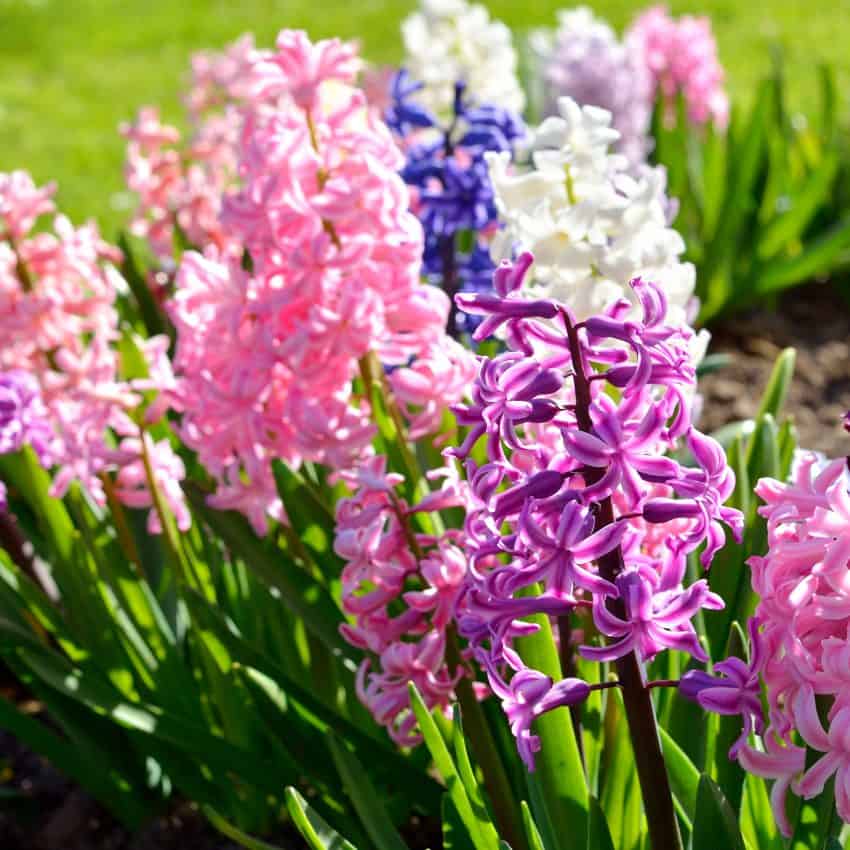
Hyacinth
Hyacinths are such beautiful and fragrant flowers. Planting them in the fall will ensure you get to enjoy them in the spring. For most areas, you should plant the hyacinth bulbs 4 inches deep unless they are a grape hyacinth variety. In that case, they should be planted 2-3 inches in the ground instead.
Before placing the bulbs in the ground, you will need to work the soil and add in some compost. Like most fall garden plants, they will grow so much better with the compost than without.
Pick a spot that is in the sun and well-drained. You never want there to be a bunch of standing water above them, but you will need to water the bulbs after you initially plant them.
Other Fall Garden Flowers to Add
- Coneflowers
- Blackeyed Susan
- Dianthus
- Flowering kale
- Celosia
As you can see, there are so many opportunities to plant fall garden flowers or vegetables. Which one will you add to your garden this year?
